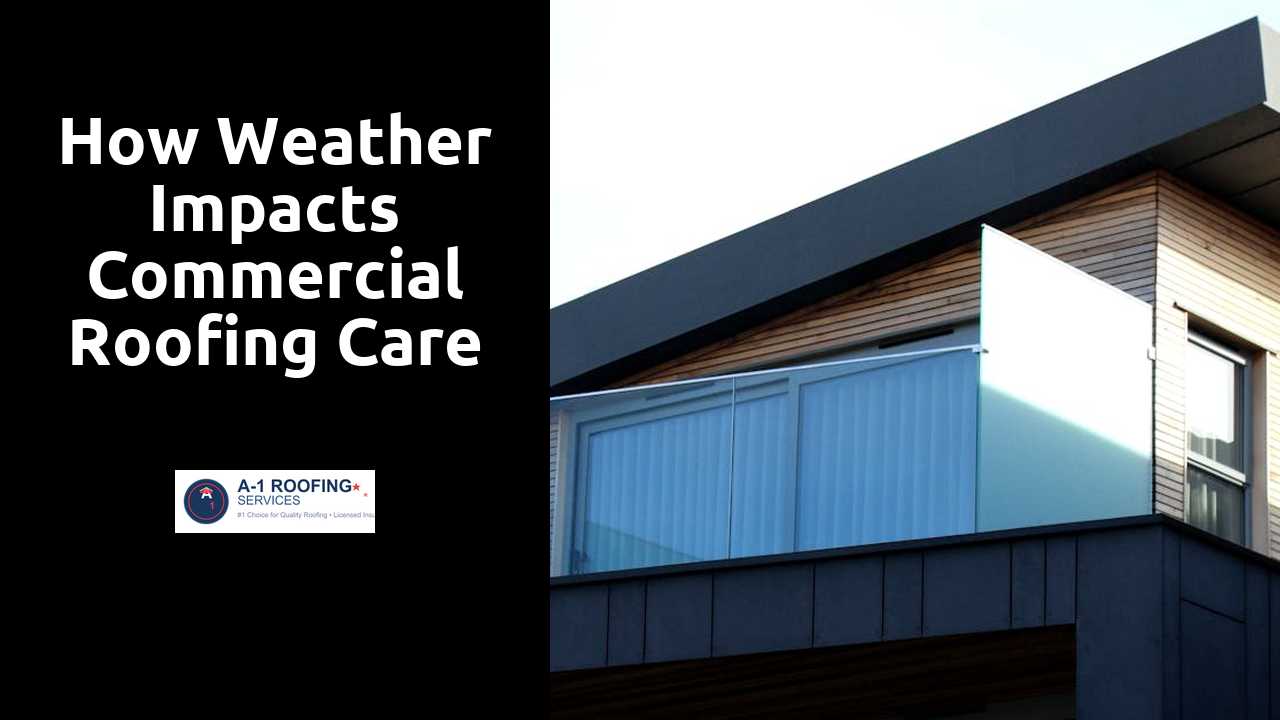
How Weather Impacts Commercial Roofing Care
Table Of Contents
Humidity's Role in Roofing Longevity
The amount of moisture in the air directly affects the condition of commercial roofs. High humidity levels can lead to condensation, which may accumulate on surfaces. This moisture can create an ideal environment for various types of fungi and mold, potentially compromising the integrity of roofing materials. Over time, this can degrade both the aesthetic and functional aspects of a roof, resulting in leaks or structural damage that necessitate costly repairs.
Conversely, low humidity can also pose challenges for roofing systems. Materials may become dry and brittle, leading to cracks and other forms of deterioration. Fluctuations between high and low humidity can exacerbate these issues, as roofing materials expand and contract, stressing seams and fasteners. Proper ventilation and moisture management strategies are essential to mitigate these risks and enhance the longevity of the roofing system in changing weather conditions.
Continue reading this article for more information.
Addressing Moisture and Mold Issues
One of the most significant threats to roofing systems is the presence of moisture and mold. Conditions that promote high humidity levels can lead to water infiltration, resulting in potential structural damage. Mold thrives in damp environments, causing not only aesthetic concerns but also health risks for occupants. Regular monitoring of the roof for signs of water pooling and dampness is essential. Prompt attention to leaks or any areas where water collects can mitigate further complications.
Employing proper ventilation is a crucial step in preventing moisture buildup. Ensuring that air circulates freely can help to dissipate humidity levels. Additionally, using materials with mold-resistant properties can provide an added layer of protection. Engaging professional roofing services for inspection and maintenance can help identify hidden moisture issues before they escalate into more severe problems. This proactive approach not only preserves the integrity of the roof but also enhances the overall safety and comfort of the building's occupants.
Seasonal Changes and Roof Care Frequency
Different seasons present unique challenges for commercial roofs, making it essential to adapt maintenance routines accordingly. During the winter, snow and ice can accumulate, leading to potential structural concerns and ice dam formation. Regular inspections during this time ensure any damage is spotted early and addressed before it escalates. As spring approaches, melting snow can introduce additional moisture issues, necessitating thorough checks for leaks and drainage system functionality.
In summer, high temperatures can cause materials to expand. This may result in seams separating or materials degrading faster than usual. Maintaining a consistent care frequency throughout this period is crucial for prolonging the lifespan of the roof. Autumn brings leaves and debris, which can clog gutters and drains. Cleaning these areas is vital to prevent water from pooling and causing damage as the season transitions.
Establishing a Year-Round Maintenance Schedule
A comprehensive maintenance schedule is vital for ensuring the longevity and performance of commercial roofing systems. Seasonal changes bring unique challenges. Regular inspections should be conducted at least twice a year. This allows for the identification of any damage or wear that may have occurred due to weather conditions. Spring is an ideal time for a thorough check after winter weather, while fall offers a chance to prepare the roof for harsh winter elements.
In addition to these seasonal inspections, more frequent checks after significant weather events are recommended. Heavy rain, strong winds, or snow accumulation can impact the integrity of a roof. Addressing minor issues promptly can prevent costly repairs and extend the life of the roof. Regular maintenance not only protects the building but also ensures compliance with warranty requirements, making it a prudent investment for property owners.
The Importance of Regular Inspections
Regular inspections play a crucial role in maintaining the integrity of commercial roofs. Over time, weather conditions can lead to wear and tear, making it essential to assess the roof's condition routinely. Inspections allow facility managers to identify potential issues, such as cracks, leaks, or damaged materials, before they escalate into costly repairs. A proactive approach often saves time and money while extending the roof’s lifespan.
Inspections should be carried out both seasonally and after significant weather events, such as heavy storms or hail. This frequency ensures that any storm-related damage is quickly addressed. Trained professionals can spot signs of deterioration that may go unnoticed by untrained eyes. Implementing a consistent inspection schedule promotes not only the roof’s durability but also the overall safety of the building and its occupants.
Identifying Weather-Related Issues Early
Regular inspections allow property managers to catch issues before they escalate. Weather can cause hidden damage that may not be visible at first glance. This includes subtle shifts in roofing material or the development of tiny leaks. By frequently examining roofs after severe weather events such as heavy rains or storms, professionals can ensure that these problems are addressed promptly.
Early detection of weather-related damage often translates into significant cost savings. Minor issues can usually be repaired without extensive work or materials. Failing to identify these problems can lead to more severe conditions that may require complete roof replacements. Maintaining a proactive approach helps protect investments while enhancing the building's overall durability.
Related Links
Professional Maintenance Services for Business RoofsEssential Tools for Commercial Roof Maintenance